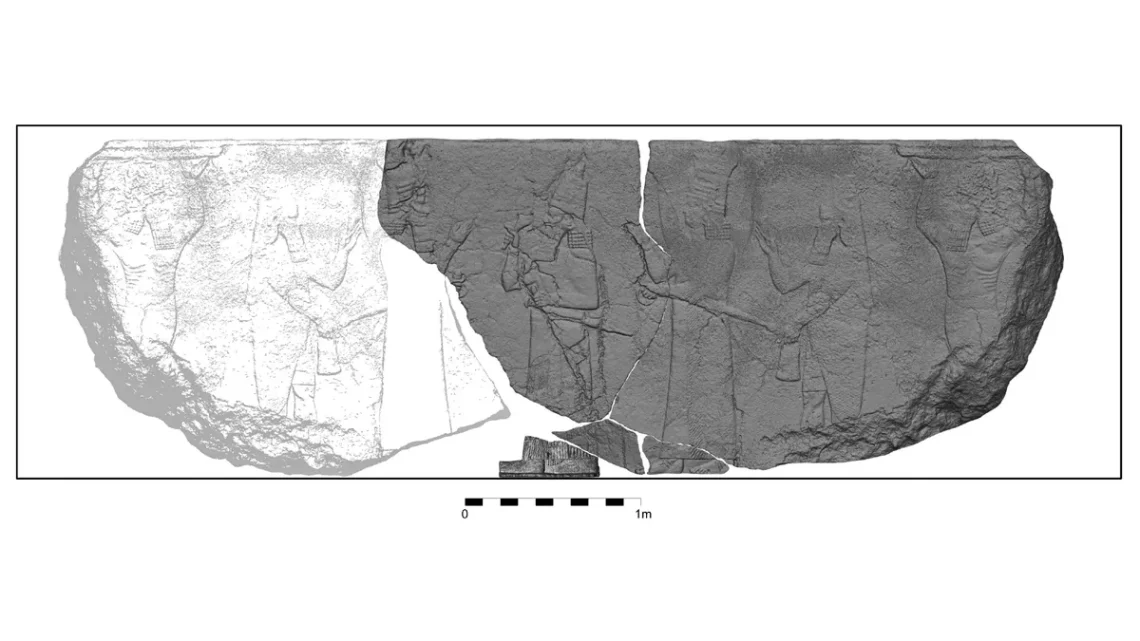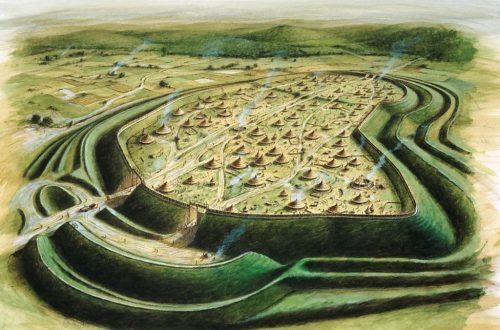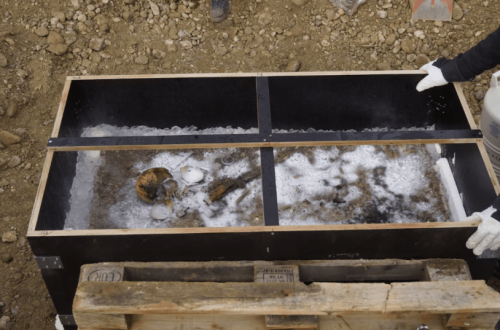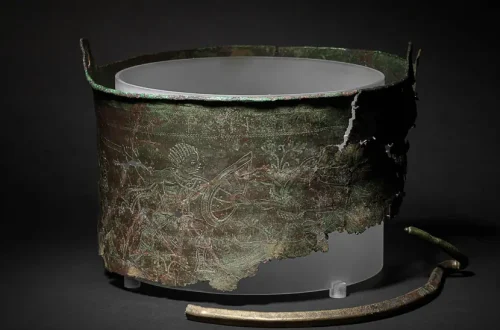A remarkable 2,600-year-old stone relief depicting King Ashurbanipal, the last great ruler of the Assyrian Empire, alongside major deities, has been discovered in Nineveh, modern-day Iraq. Uncovered during excavations at the North Palace, this intricately carved panel offers a vivid glimpse into Assyrian royal propaganda and religious symbolism, shedding new light on one of history’s most powerful empires.

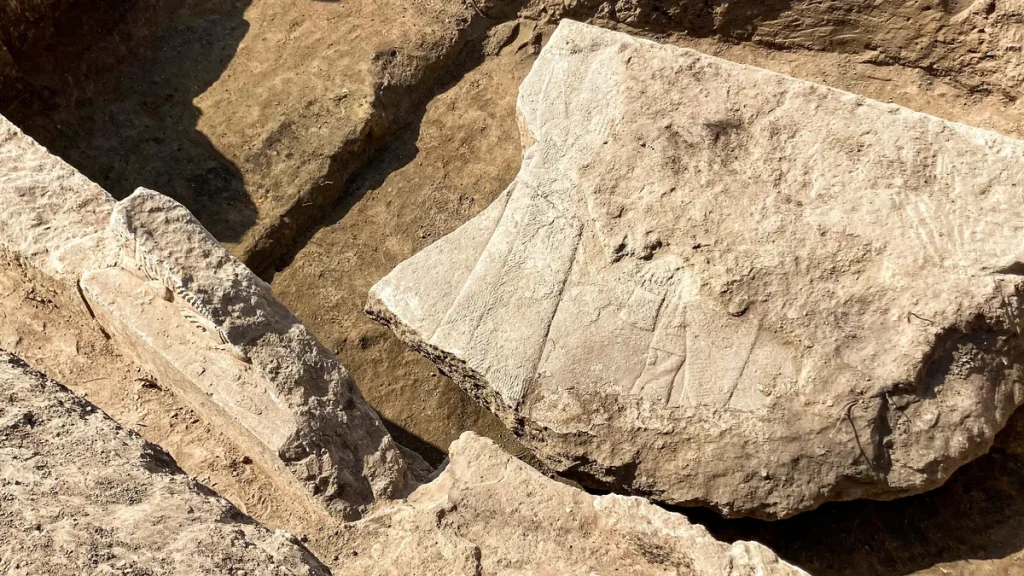
Nineveh, the ancient capital of the Assyrian Empire, was a sprawling metropolis in its heyday, renowned for its grand palaces and cultural achievements. The newly discovered relief, found during archaeological work led by Iraqi and international teams, including researchers from Heidelberg University, was unearthed in the North Palace, a site associated with Ashurbanipal’s reign (668–627 BCE). The panel, described as “quite enigmatic” by experts, portrays the king standing among Assyrian gods, a rare depiction highlighting his divine authority.
The relief’s discovery is significant not only for its artistic quality but also for its historical context. Nineveh was largely destroyed in 612 BCE by a coalition of Babylonians and Medes, leaving many of its treasures buried for millennia. The panel’s survival, despite looting and damage in antiquity, makes it a precious link to Assyria’s past.

Ashurbanipal is one of Assyria’s most celebrated rulers, known for his military conquests, intellectual pursuits, and the creation of the famous library at Nineveh, which housed thousands of cuneiform tablets. The relief captures his carefully crafted image as a king chosen by the gods. Unlike earlier Assyrian reliefs that often showed kings in battle or hunting, this panel places Ashurbanipal in a divine assembly, surrounded by deities such as Ishtar, goddess of war and love, and Shamash, the sun god.
The carving’s iconography is striking. Experts note that the gods are depicted with their characteristic symbols—winged discs, horned crowns, and celestial emblems—while Ashurbanipal stands in a position of reverence and power. This composition reflects the Assyrian belief that the king’s authority was sanctioned by divine will, a key element of royal propaganda. The Iraqi archaeological team has highlighted the relief’s rare depiction of royal and divine figures together, offering clues to how Ashurbanipal positioned himself in the empire’s final decades.
The relief’s discovery comes with a sobering backdrop. Nineveh’s archaeological sites have faced significant threats, including looting during the Islamic State’s occupation of Mosul (2014–2017) and earlier plundering in antiquity. The panel shows signs of ancient damage, with parts deliberately defaced, possibly by enemies of the Assyrians. Despite this, its core imagery remains intact.
Excavations at the North Palace also revealed other fragments, including reliefs of battle scenes and tribute bearers, though the Ashurbanipal panel stands out for its rarity. Working with international partners, the Iraqi State Board of Antiquities and Heritage is now focused on conserving the finds and protecting Nineveh’s remaining heritage. Plans are underway to study the relief further, using non-invasive techniques to analyse its composition and context.
Assyrian reliefs are renowned for their detailed craftsmanship, blending artistic mastery with political messaging. The Ashurbanipal relief is no exception, showcasing the empire’s sophisticated stone-carving techniques. Its discovery adds to our understanding of how art was used to reinforce royal power and religious devotion in the 7th century BCE.
The panel also highlights Nineveh’s role as a cultural hub. F. Frahm of Heidelberg University noted, “This find illustrates the complexity of Assyrian imperial iconography, where gods and kings were intertwined to project unassailable authority.” The relief’s divine assembly may have served as a visual reminder of Ashurbanipal’s legitimacy during a turbulent period marked by internal revolts and external threats.
The discovery has sparked excitement among archaeologists and historians, who see it as a chance to deepen our knowledge of Assyria’s final chapter. The relief will likely be housed in an Iraqi museum, though discussions about its display are ongoing due to the need for conservation. International collaboration will be key to ensuring its preservation and study, with hopes that advanced imaging could reveal hidden details.

